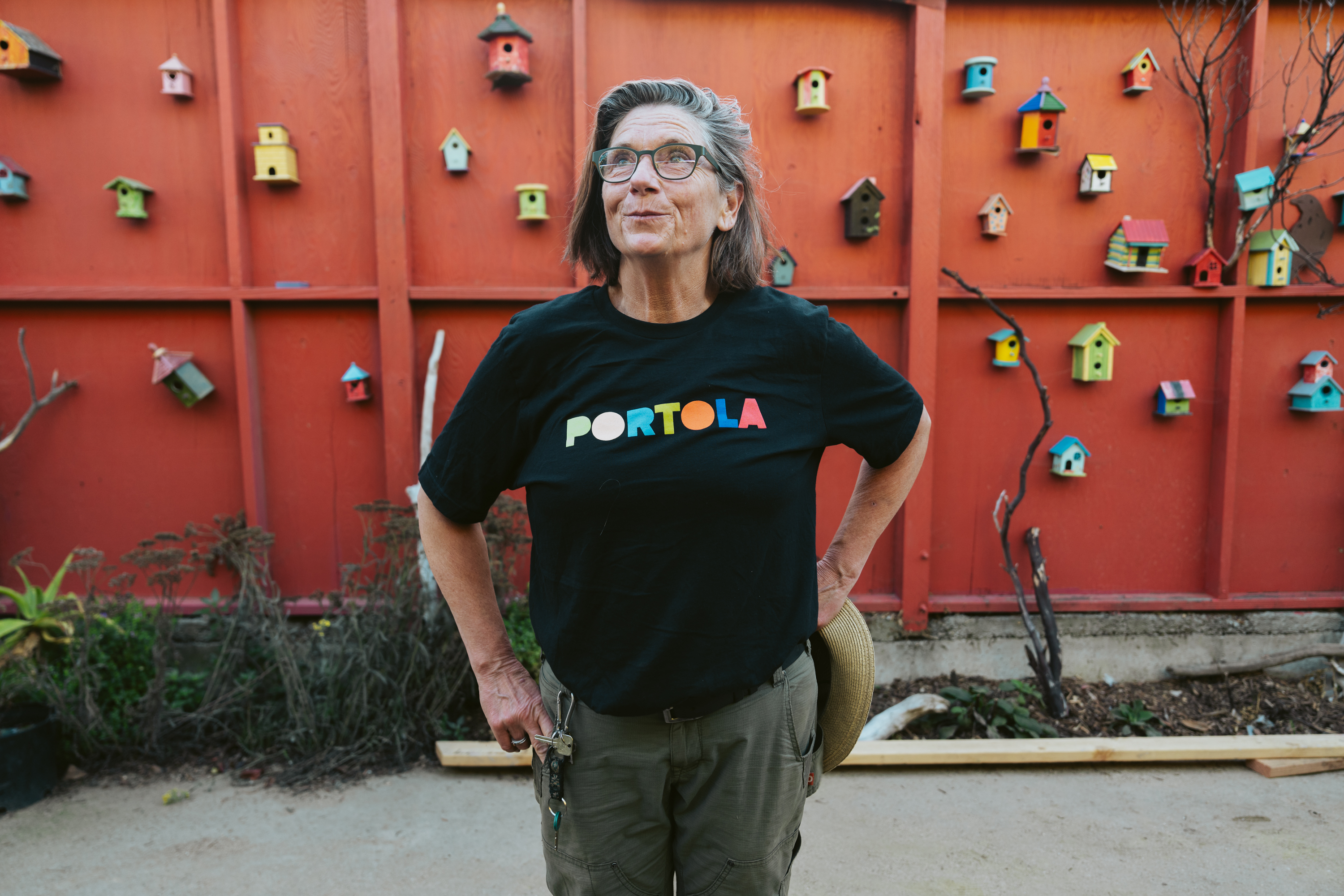While San Francisco is in the throes of a debate about sidewalk planters and their perceived hostility toward our unhoused neighbors, one residential neighborhood is doubling down on community gardens intended for everyone’s enjoyment—crowned by a Gothic metal gate constructed from hammers, gears and garden tools.
The Portola District, just south of Bernal Heights, is hemmed in by freeways on two sides, severing it a bit from the city’s urban fabric. The building of U.S. 101, in particular, required demolishing a number of houses and reducing a dozen streets to dead ends. Memories run long in the historically working-class neighborhood—San Francisco’s “Garden District,” as the sign at the San Bruno Avenue on-ramp proclaims—and when the opportunity to reclaim a strip of derelict Caltrans land along the freeway embankment came up, the community rallied to right a historic wrong.
Architect Angie Matt is among a group of co-directors of what’s become known as the Freeway Greenway, a multiblock space filled with redwood saplings, art and the half-buried chassis of a 1969 Dodge Coronet, all along a north-south path paralleling San Bruno, the Portola’s main drag.
“Portola” is pronounced “POOR-ta-luh,” by the way—unlike the street or the music festival, both of which are “poor-TOH-luh.”
Matt had her first look inside the future greenspace more than four years ago but didn’t start work in earnest until the pandemic. She wound down her architectural practice earlier this year, and since then, she and her crew have pretty much been working every day, clearing debris, propagating cuttings and commissioning art. Wire cages known as “gabions” hold the sloping earth in place, some studded with vintage license plates for extra support. Aruba may be a Caribbean paradise, but its stamped, black-and-white plate is on the plain side—although it does read “One Happy Island.”
Forming a kind of subcommittee of the Portola Neighborhood Association, Matt and her fellow co-directors gradually grew in clout until they got on the city’s radar. Now, they have a partnership with the Department of Public Works, which has helped to clear trash and waste, as well as a mural, Mother Nature and Her Gardners, by Charles Dabo, who lives nearby. Matt is especially glad of their progress, because when most people think about the things that typically go up next to the freeway, they imagine an encampment.
“I’ve had grown men cry. One guy poked his head in. He goes, ‘I don’t know who you are or what this is. But you’re restoring my faith in the Lord,’” she said. “I was like, ‘Dude, you just paid me for, like, five years.’”
The focal point is the faintly spooky 18-foot gate at the end of Burrows Street that was constructed by artist Dana Albany, who specializes in large-scale installations. Adorned with knives, faucets, hammer peens, glass rosettes and antique garden tools, it could grace the altar of a cult of mechanical pagans—a portal to the Portola. It also resembles a church in Chicago near where Alex Hobbs, one of the project’s co-directors, grew up. The more you look at it, the more you find.
“It’s a treasure chest,” Albany said, adding that her favorite component was the journey that people go on when they approach it and find the greenway.
The gate took six months to complete, partly because it was supposed to be shorter. Its welded-on trowels and shovels echo the neighborhood’s agricultural past, of which the decayed greenhouses on Woolsey Street are all that remain. (Their potential revival is another community-driven project.)
The greenway project was a tough sell for some neighbors whose houses butt up against the parcel.
“Initially, they were scared, going, ‘Oh, there’s going to be others here, and we don’t want that,’” Matt said. “They were scared about security issues. But we’re here every day, so we are the security.”
The Freeway Greenway is a bit shaggy yet, with plenty of spiderwebs and a maintenance shack at one end. When a wheelchair-friendly ramp and handrails are in place, Matt will move on to the next phase, extending it to Mansell Avenue, at the next freeway exit to the south. There, the greenway can connect with an existing median that climbs to McLaren Park, the city’s second-biggest park, which may soon have fewer cars along its main route.
What was only recently a long, narrow plot of weeds and garbage is now a hotbed of teamwork and elbow grease.
“The first Saturday of every month is an open house-slash-volunteer day,” Matt said. “We are here, rain or shine—and we get a solid group. I mean, it all started with, like, three of us.”
